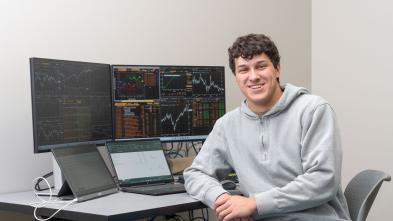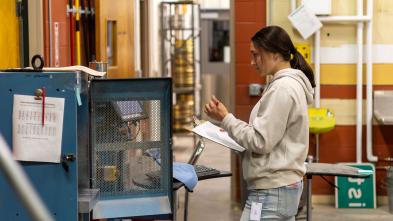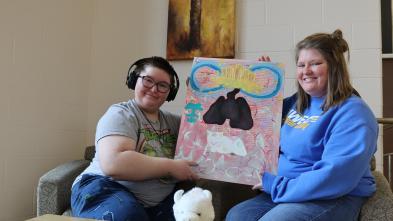“His focus was on healthcare, trying to directly impact the community,” Seliya says. “That was one of the conversations we had very early in our research in AI, that it directly impacts the providers, the nurses, as well as the patients.”
In the research, McCormack trained AI models to analyze clinical data from 223,000 patients in a Centers for Disease Control public health survey to find trends and predict future diabetes patients. The AI models then ranked patients’ attributes to identify the most important health risks for diabetes.
The research findings showed the top indicators predicting diabetes were biomedical factors, including the top three of high blood pressure, body mass index and high cholesterol. But the research also indicated that four of the 10 most important factors were social determinants — time between patient checkups, employment status, income level and having a personal doctor.
“It’s all interconnected,” McCormack says. “We’re not saying the socioeconomic conditions are going to be the most important predictor, but those factors are influential and relevant.”
While past research has examined diabetes prediction, the study using computational machine learning to find the correlation between socioeconomic factors and the disease remains “a little bit underexplored,” McCormack says.
Seliya says McCormack has done a “fantastic job” with his research.
“He seems to be excited and he is a very fast learner,” Seliya says. “He works fast and keeps me on my toes, to be honest.”
Student presented research at NCUR
McCormack presented his research at the National Conference on Undergraduate Research in Pittsburgh, Pennsylvania, in April. The research has been accepted for publication and he will present it again in August at the International Society of Science and Applied Technologies International Conference on Reliability and Quality in Design in Hawaii. Seliya says McCormack will be presenting along with several Ph.D. candidates.
“He will be in good company,” Seliya says.
McCormack says his diabetes research is part of a broader research project to explore AI-driven solutions for diabetes prediction and other areas of healthcare analytics. McCormack is collaborating this summer with Seliya and a student from another university in a separate high-performance computing project through the National Science Foundation’s Research Experiences for Undergraduates program at UW-Eau Claire.
McCormack’s work is part of his long-term vision of being a computer and data scientist in the healthcare domain, advancing AI-driven research and practical applications.
“I keep hearing about in the future we’re going to be able to have personalized healthcare plans for different people on an individual basis rather than a population basis,” McCormack says. “I think with AI, that future is going to be possible. I want to work in that space because I think that’s really exciting.”




